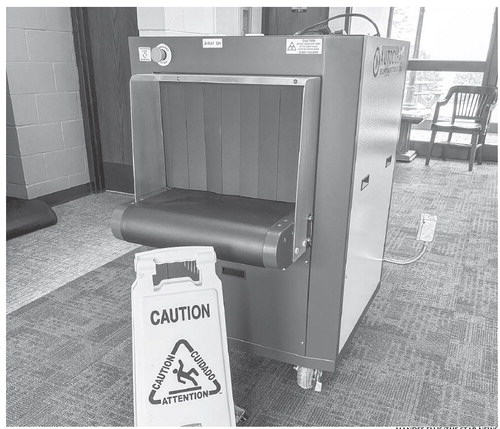Greenwood School District establishes staff compensation model, raises base salary
By Valorie Brecht After more than a decade without one, the Greenwood School Board has established a staff compensation model to provide some consistency to how individual salaries are set.
“After Act 10 (in 2011), a lot of salary schedules went out the window because there was no negotiation anymore. So, people were just hired at — so when we would hire somebody, we would just assign a salary based on what we thought or what we needed,” said District Administrator Joe Green. “So it created a bunch of inequity and imbalance in salaries. So we did a compensation model to bring all that back in and raise our base to try and be competitive in our area.”
After much school board discussion and presenting the proposed model to staff members in both buildings, Green brought the model to the board for final approval at a special meeting May 8. The base salary for certified staff will be $43,000, compared to the $38,500 it was before. Employees will receive a credit of $500 per year for each year of experience they have teaching in a public school, whether at Greenwood or elsewhere. If the individual possesses a master’s degree, they will get a $2,000 salary increase. There are also longevity incentives, with salary increases given for every five years with the district. The longevity part is not set in stone yet, with plans for the board to discuss further.
Green said the formula would make things more equitable and assured the board it would not result in salary cuts.
“All staff will be plunked into the formula and if it spits out a number lower than what they’re making now, they would get a $1,500 raise. If it spits out something higher than they’re making now, they would get that,” said Green.
Board member Eliza Ruzic posed the scenario of a teacher making $50,000 per year and the formula came back with $51,000. Green said if the model comes back with less than a $1,500 raise, the staff member would still get a $1,500 raise. So in that scenario, the teacher’s salary would be bumped up to $51,500.
Board president Jamie Gardner asked what the staff’s response was when Green presented the model.
“You win some, you lose some with any model that’s presented. Just like the last one, some were happy that it seems more equitable. Some were sad that their raises went down. But I do think it’d be hard to argue that it’s not at least an equitable system,” said Green.
All certified staff will get at least a $1,500 raise for next
Please see Staff compensation, page 7 Staff compensation,
from p. 1 school year. After that, raises will be based on what the board decides every year.
Green said although imperfect, the model made it easier to arrive at a ballpark figure when hiring someone new.
“At least it’s a system to try and keep it somewhat close. At the end of the day, when somebody comes to me or I have to hire a position … and I have zero applicants, and somebody wants X amount of money and it doesn’t fit this model, we have a decision to make. Do we go without or are we willing to stretch the model? Those are things that we have to figure out,” he said.
Green also briefly addressed longevity pay, as there had been questions about that. The current staff handbook has two different systems of longevity pay, for those hired before 2018 and those hired after. This new model would do away with both of those.
“Those would go out the door and (the) employee relations (committee) could start to have those conversations again next year. Now, we have a new beginning to a salary structure. Now, what could a longevity bump look like?” he asked.
He said it was important to figure that piece out because some people will have just missed an increase they would have gotten under the old system, so he wanted to make sure they still got something.
“It gives employee relations something to talk about. I want to honor the people that stay here and want to give people a reason to stay here,” he said.
For support staff, the base rate has been increased to $15.50 per hour, with a $0.20 increase per year. If the support staff member has an associate’s degree, they get an extra $0.50 per hour and a bachelor’s degree is an extra $1 per hour. If the support staff’s current salary is more than the formula calculation, they will receive a $0.65 raise.
Green also made the point that when talking about compensation, it includes more than just wages. When wages go up, the employer’s contribution to the employee’s retirement account goes up.
“When you increase wages, it’s not just wages. The total package goes up and it’s a bigger dollar amount for the district,” said Green. “I wanted them (the staff) to see our average salary with someone that’s on a family health plan, the cost of retirement, the cost of subs for that person based on the sick time allotted, what does dental and life insurance cost, long-term disability. So when we talk about what does somebody make, it’s more than just salary.”
The board unanimously approved the staff compensation model.





